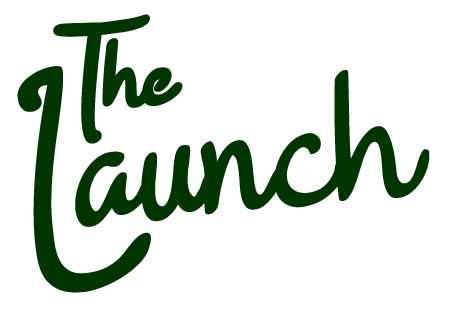
News by Numbers: A Statistical Advantage
Reading this blog will make you 57% more likely to land a press hit within the next 30 days*
*Ok, fine. We totally made that one up.
But CREDIBLE, real statistics (backed by research conducted by reputable organizations) have the power to:
- Strengthen your story
- Substantiate your claim
- Provide valid justification for why your brand, product or service is newsworthy
Statistics are a vital part of most press releases, pitches, and best of all – the media LOVES them. Why? Because when used correctly, the right facts and figures take the bias out of a brand-heavy press release and turn it into a news story.
So how can you use statistics to YOUR advantage? How do you know when you’ve found the right stat?
Ask yourself the following questions to determine if the stat you’ve found is right for you.
Think of this as your Stat Criteria Checklist (SCC):
Is it relevant to your brand, product, service or industry?
This one is pretty straight-forward. If you are a car salesman, look for stats about the automotive industry. If you’re a restaurateur, look for stats about the hospitality, food or customer service industries.
Does it illustrate, contextualize and justify a point, claim or offering you’re trying to make?
The best stats are ones that point to the reason why your product or service is necessary and /or going to succeed.
For example, your restaurant has just launched a plant-based menu, and you’ve found a stat about the national growth percentage of people switching to a plant-based diet. Great! Or maybe, a stat pointing to how much one person switching to a plant-based diet affects the environment. Even better! Both stats justify your decision to launch your plant-based menu and they position you as a change-making voice in a larger conversation that affects people and the environment. Bingo!
Is it relevant to the audience of your target media outlet?
Always think about how your stat affects the reader/viewer of the publication you’re pitching to.
For example, if you’re pitching to Women’s’ Health magazine, include stats that refer to how a plant-based diet affects women’s health specifically. If you’re pitching to the Equinox gym magazine, look at how a plant-based diet affects athletic performance.
Is it powerful/ dramatic enough to catch attention?
Your stat should be powerful – it should show a dramatic increase or decrease in a consumer pattern, or paint a strong visual. Ideally it would point to something that affects the day-to-day lives of the audience for maximum impact.
Example: Recent research from UCLA suggests that for every Angeleno who switches to a plant-based diet, air quality in Los Angeles will improve by XX%.
Is it recent?
Your stat needs to have been released recently, preferably within the last year or two. Outdated stats don’t help anyone – unless you’re trying to show how a trend has developed over a period of time.
For example, maybe you’re comparing research conducted in 2001 with research conducted in 2018, so you can extract a percentage growth or decrease from that data.
Is it from a credible source?
Unfortunately, it’s not as simple as heading to google, and hitting copy + paste on the first semi-relevant stat you find. An un-referenced stat found on a random blog online is not going to strengthen your story. You have to find and cite the source, and make sure its credible (unlike the stat we made up at the beginning of this blog).
What’s NOT going to work:
Finding a stat online that says: 80% of people surveyed said they have considered switching to a plant-based diet.
But your source is Maria’s Cooking Blog with 12 subscribers, and Maria surveyed ten of her closest friends, eight of whom said they would try a plant-based diet.
What will work:
Finding respected industry bodies that relate to your brand. They usually commission, or at least refer to frequent surveys, research studies and data that help identify trends and habits across the industry. Good places to start are:
- Universities
- Government bodies
- Unions
- Census
- Medical/Scientific Journals
Is it cited and referenced appropriately?
To cite a statistic, you need to mention:
- When the study or research was done
- Which organization /industry body/ person commissioned it or conducted the research
- You can even add where the stat was published, if you found it in a reputable publication, such as Forbes or the New York Times etc.
E.G; “A 2018 study by the National Department of Health showed women under 30 are the largest and fastest growing group to adopt a plant-based diet.”
Final FAQ
Ok, so you found a great statistic that ticks off all the items on the SCC. Now you’re probably thinking:
Where do I position the statistic in my release/email pitch? Can I lead with a statistic? And if I do – how do I bring it back to my brand so the stat doesn’t distract and ‘become the news.’
You absolutely can (and should) lead with your statistic, especially if its strong or particularly recent. You want it as close to the top of your release as possible. The idea is to use the stat to contextualize what you’re trying to promote within your business, THEN tie it back to your key message.
E.G; A recent study revealed that XX% of Americans are switching to a plant-based diet, with projections that a further XX% will make the switch by 2025.
The 2018 study, commissioned by the Department of Health showed women under 35 are the largest and fastest growing group to adopt a plant-based diet, which is why restaurateur Sam Smith of LA’s Sam’s Kitchen has launched his ladies’ night plant-based menu.
And there you have it! The right stat, from the right source, used in the right way can make your news newsier and your brand more credible.
Happy pitching!
